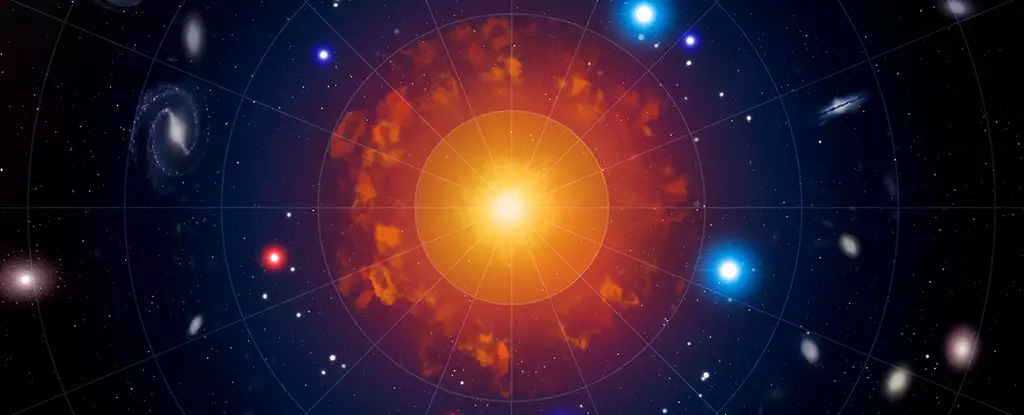The idea of the Universe being 13 billion years older than currently believed challenges the very foundation of cosmology. The proposal put forward by theoretical physicist Rajendra Gupta suggests that the Universe’s age has been misrepresented due to the tricks played by light. This challenges the existing notion of dark matter and dark energy, two concepts that have been widely accepted in modern cosmology. The oscillations found in the maps of galaxies provide evidence for Gupta’s claims, indicating that the Universe may not require these traditionally significant components.
The discrepancy in the age of the Universe raises questions about the accuracy of current models. The traditional understanding of an accelerating expansion that dates back approximately 13.7 billion years now faces a significant challenge. Gupta’s theory suggests that the expansion is not driven by dark energy; rather, it is a result of changing interactions between particles as the Universe stretches. This challenges the existing framework and calls into question the need for dark energy to explain the expansion.
Gupta’s hypothesis is not entirely new; it draws inspiration from ideas proposed almost a century ago. The concept of ‘tired light’ suggested by Swiss physicist Fritz Zwicky in the late 1920s laid the groundwork for Gupta’s current theory. By combining covarying coupling constants with tired light, Gupta aims to provide an alternative explanation for the expansion of the Universe. This radical approach seeks to replace conventional models with a new framework that better aligns with current observations.
The implications of Gupta’s theory extend beyond the age of the Universe; they call for a reevaluation of fundamental concepts in cosmology. By incorporating tired light and varying coupling constants, the new model aims to explain the patterns observed in the distribution of visible matter across space. Furthermore, it offers an alternative interpretation of the cosmic microwave background, shedding light on the early stages of the Universe’s formation. However, to fully replace existing models, Gupta’s theory must address the implications for dark matter and dark energy, which have long been central to cosmological explanations.
Moving forward, the scientific community must critically evaluate Gupta’s proposal and determine its feasibility in explaining the mysteries of the Universe. While the theory offers a simpler explanation by removing the need for dark matter and dark energy, it also introduces new complexities that challenge established norms. Whether the CCC+TL model can withstand rigorous testing and scrutiny remains to be seen. For now, the age of the Universe remains a subject of debate, with Gupta’s theory presenting a provocative yet controversial alternative to traditional cosmological frameworks.


Leave a Reply